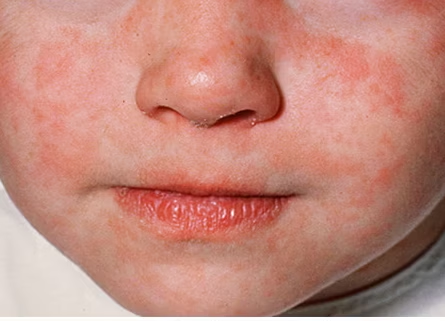
Measles, also called rubeola, was once only considered a childhood infection, as most children get vaccinated once they are old enough. It presents as a red rash that begins on the face and spreads to the chest and the back, all the way down to the feet. In addition to the rash, symptoms include fever, cough, runny nose, pink eye and swollen throat, just to name a few. Measles is highly contagious, as it is spread from infectious droplets by an infected person sneezing or coughing. The droplets can last in the air for an hour and also linger on surfaces. Without the vaccine, around 90% of people exposed to the virus will end up getting it. Two potentially fatal complications of measles are pneumonia and encephalitis, which is inflammation in the brain. Left untreated, this can result in death or permanent brain damage. Once you’ve had measles, you cannot contract it again.
Currently, there is a measles outbreak in the United States. As of March 6, 2025, there were 222 confirmed cases, the majority of which were in New Mexico and Texas. It is important to stay up to date with vaccines; the vaccine is 97% effective at preventing measles. The incubation period for measles is from four days before the rash appears to four days after. Before the vaccine was created in 1963, there was an epidemic in the United States. Starting in 1912, almost six thousand fatalities caused by measles were reported within that first decade. This highlights the importance of mass vaccination as a preventative measure of this potentially fatal virus.